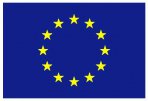France: Next-generation anvils for the Paris-Edinburgh cell

One of the goals of Task 7.3 of Sample Environment is to develop better high-pressure cells for neutron scattering. A cell commonly used to put a sample under high pressure is the Paris-Edinburgh (PE) press which exerts the pressure with anvils onto a sample hold in gaskets. However, the existing equipment produces an important neutron background which prevents the measurement of small signals or small samples. The anvils are also quite expensive and can generally only be used three times.
A team at ILL: Thomas Hansen, Eddy Lelièvre-Berna, James Maurice and Claude Payre, together with Stefan Klotz, an expert in the PE press from IMPMC (Sorbonne University), firstly carried out initial investigations on a well-known reference sample on ILL’s D20 diffractometer during the beginning of the SINE2020 project. The results revealed that a better signal to background ratio might be obtained by:
a) considering the material that the anvils are made of and
b) reducing the incoherent scattering caused by the gasket.
Currently, European facilities use anvils made out of neutron absorbing cBN. At the highest pressures, the anvils hide the enclosed sample in “thick” TiZr gaskets producing unwanted incoherent neutron scattering.
So the team decided to replace the cBN material with a stronger material transparent to neutrons: sintered diamond anvils made with a SiC-binder. They also made the TiZr gaskets thinner by 0.2mm to reduce the amount of unwanted material in the neutron beam. Further steps included optimizing the shape of the anvils for a reduced sample volume (from 50 mm3 down to 30 mm3) and improving the focusing of the neutron beam onto the sample using collimators.
When tested on D20, these adaptations lead to the same signal to background ratio for much smaller samples and achieved a 30% higher pressure-load efficiency. At comparable applied pressures, these new “SINE” anvils also present an increased life-time which will possibly lower the operating costs.
Acknowledgements: Eddy Lelièvre-Berna, ILL




